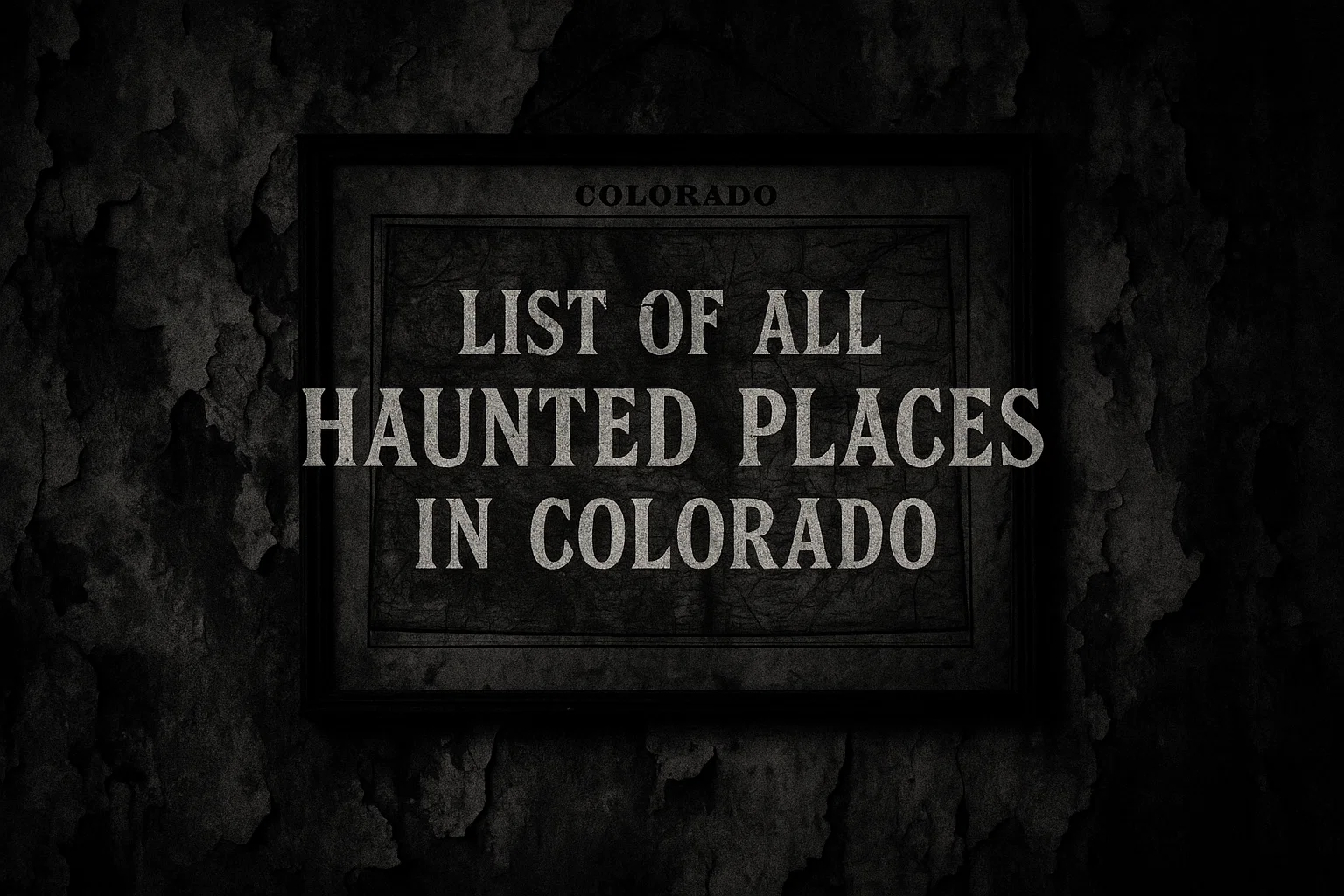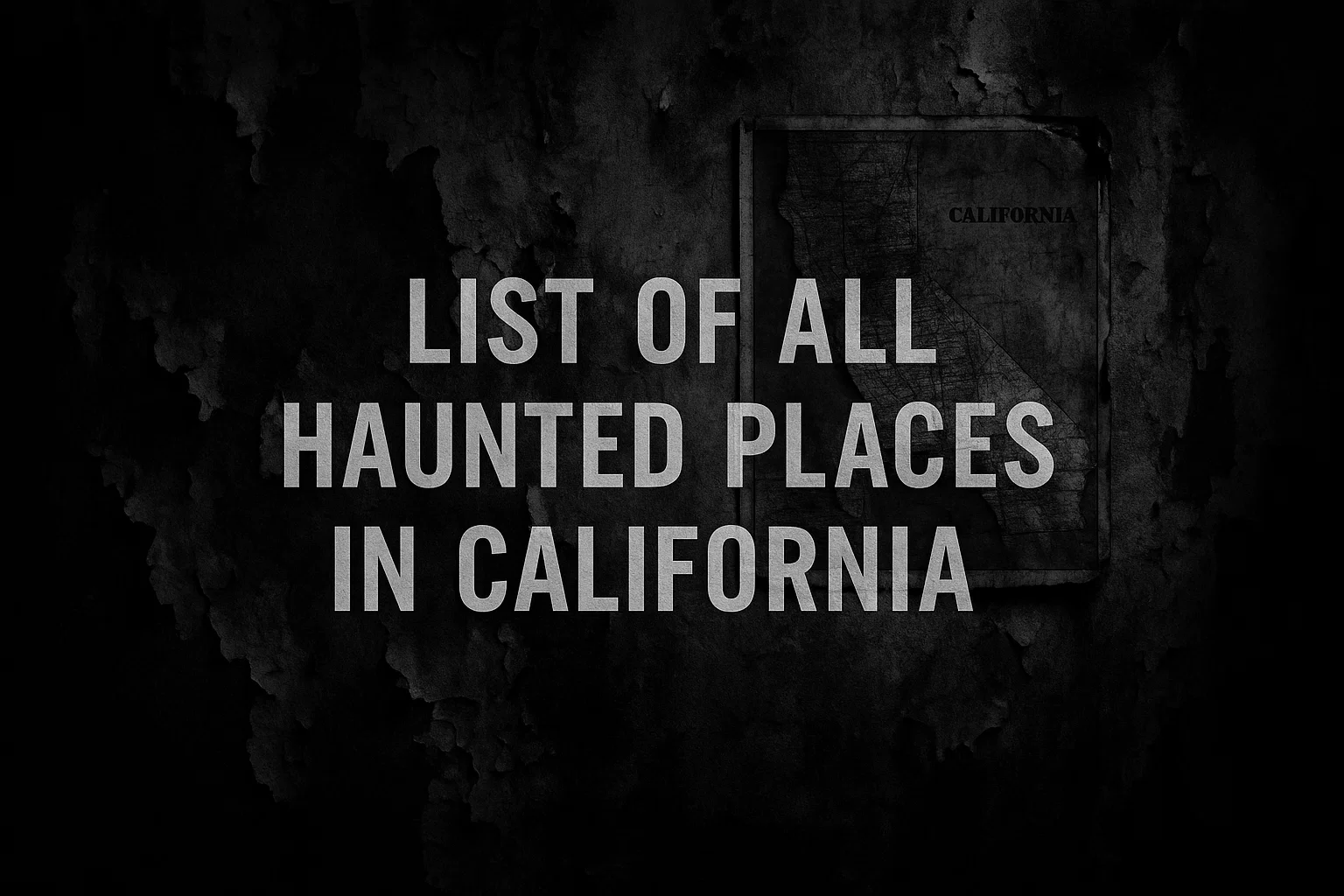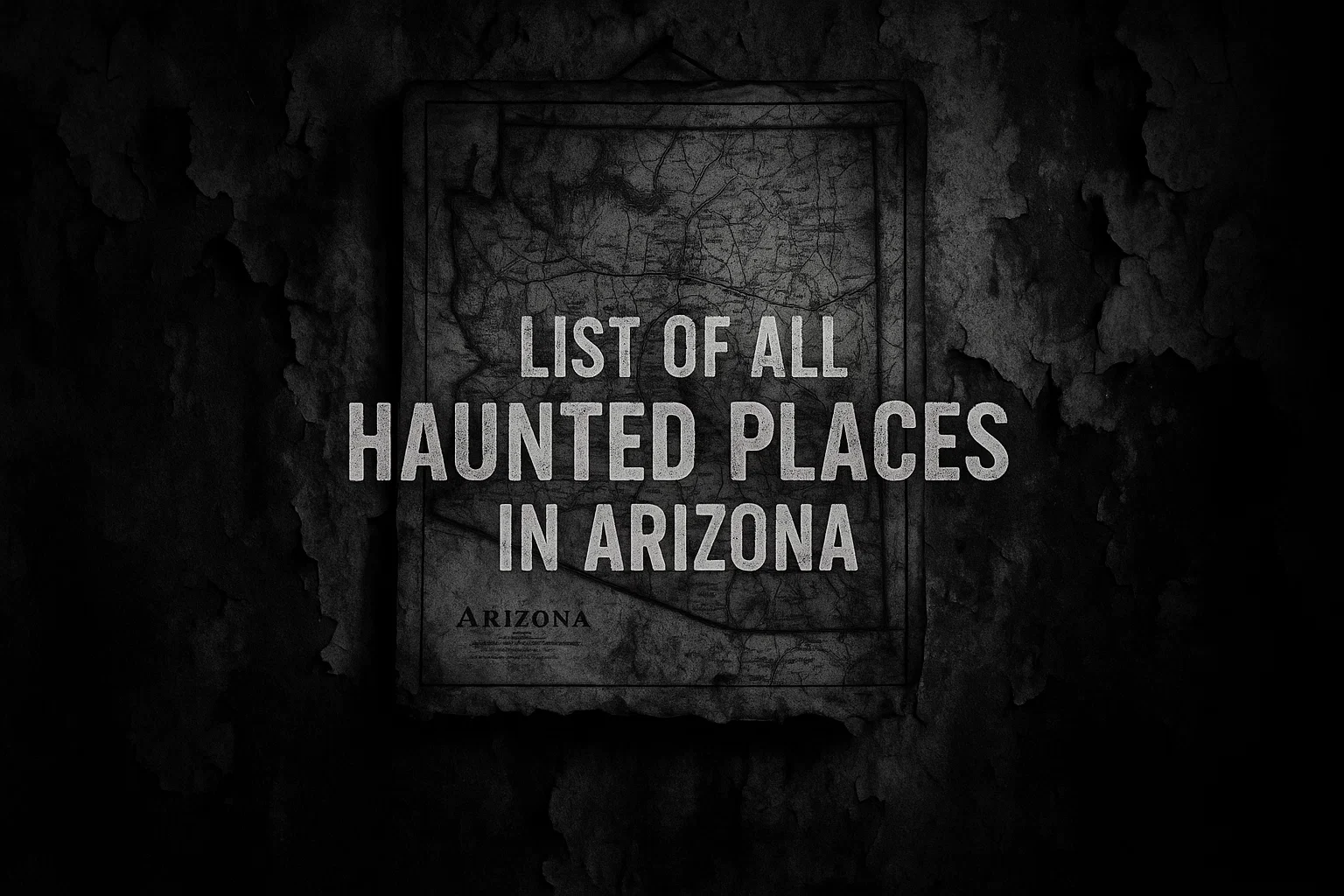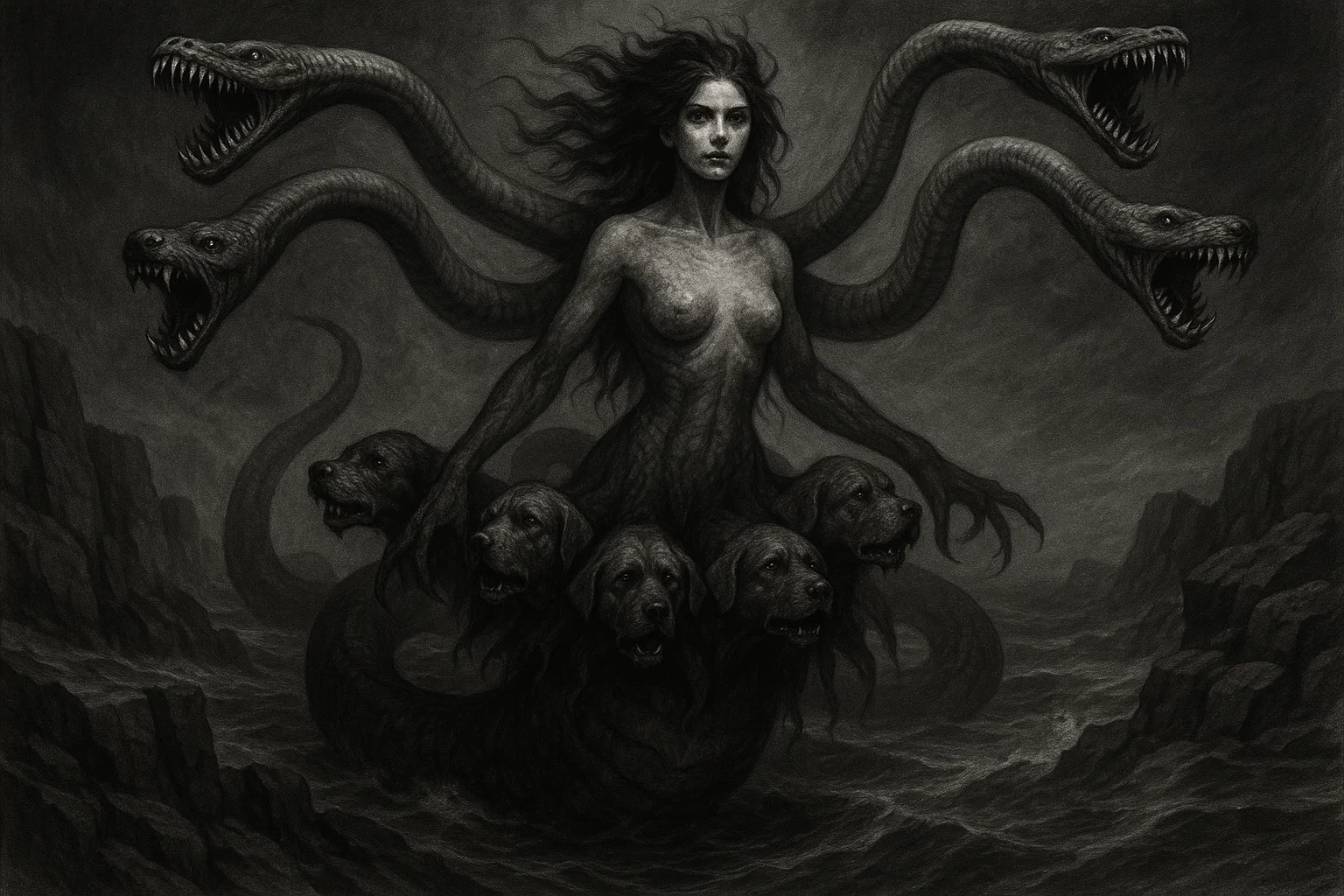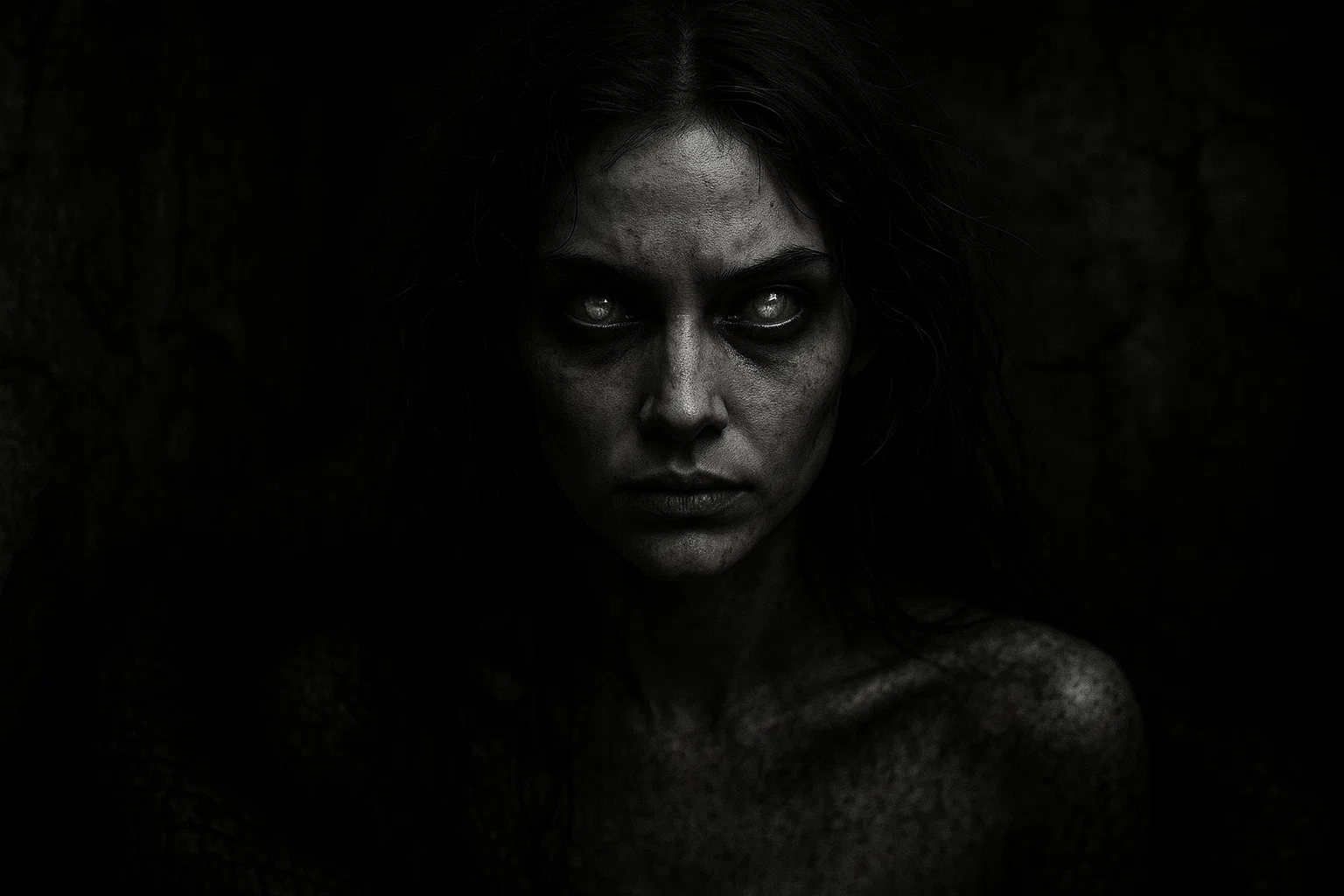In demonology, Astaroth stands as a figure of unparalleled intrigue and power. Known as the Great Duke of Hell, he commands 40 legions of demons and holds a coveted place in the infernal trinity alongside Lucifer and Beelzebub, a triad that shapes the very structure of the underworld.
His name reverberates with echoes of Astarte, the ancient Phoenician goddess of love, fertility, and war, suggesting a profound transformation from divine reverence to demonic infamy. Astaroth is a paradox: a teacher of all sciences, a revealer of secrets spanning the past, present, and future, and a tempter who sows seeds of laziness, vanity, and self-doubt.
His presence is documented in medieval grimoires such as The Lesser Key of Solomon, The Book of Abramelin, and Pseudomonarchia Daemonum, where he is depicted as a dual-natured entity—both enlightening and perilous.
What secrets does this enigmatic demon guard? How did a goddess become a duke of hell? This article embarks on a comprehensive journey through Astaroth’s origins, powers, and role in the hierarchy of hell, unveiling the layers of myth and mystery that define one of demonology’s most captivating figures.
Summary
Key Information
| Attribute | Description |
|---|---|
| Name | Astaroth (Ashtaroth, Astarot, Asteroth, Astareth) |
| Title | Great Duke of Hell, Treasurer of Hell, Prince of Accusers and Inquisitors, Chief of the Third Order |
| Hierarchy | Member of the evil trinity with Lucifer and Beelzebub; 29th spirit in the Ars Goetia of The Lesser Key of Solomon |
| Servitors | Commands 40 legions of demons, each legion comprising thousands of spirits |
| Powers | Teaches liberal sciences (mathematics, astronomy, philosophy); reveals secrets of past, present, and future; grants friendships with great lords; induces laziness, vanity, self-doubt, and rationalized philosophies; discourses on creation and the Fall; protects from other demons’ malice |
| Appearance | Appears as a beautiful or foul angel riding an infernal dragon, holding a viper in his right hand; emits a noxious stench requiring a magical ring for protection; sometimes depicted with blackened wings or a crowned head |
| Etymology | Derived from Astarte, Phoenician goddess of fertility, love, and war; possibly linked to Hebrew Ashtoreth or Semitic shamdan (torch/flame) |
| Associated Figures | Astarte, Ishtar, Inanna, Aphrodite, Venus (goddess predecessors); Virgin Mary, Reiaiel (Kabbalistic angel) as adversaries; Lucifer, Beelzebub (trinity allies); Aamon, Barbatos, Rashaverak, Pruflas (subordinate demons) |
| Role | Oversees infernal treasury, manages hell’s secrets, fosters intellectual corruption, aids in divination and social alliances |
| Symbolism | Dragon (chaos, power), viper (deception, poison), dual angelic forms (duplicity), crown (authority), blackened wings (fallen status) |
| Weaknesses | Countered by a magical ring to protect against his stench; repelled by prayers to the Virgin Mary or invocation of the angel Reiaiel; vulnerable to divine names |
Where Does the Name Astaroth Come From?
The name Astaroth is a linguistic and cultural bridge spanning millennia, connecting the divine feminine of ancient Near Eastern religions to the demonic masculine of medieval occultism.
Its primary root lies in Astarte, the Phoenician goddess of fertility, love, and war, worshipped across the Levant in cities like Sidon and Tyre. Astarte’s name, derived from the Semitic ‘štr (star), reflects her association with celestial beauty and divine power, akin to the Babylonian Ishtar and Sumerian Inanna.
In the Hebrew Bible, she appears as Ashtoreth (singular, 1 Kings 11:5) or Ashtaroth (plural, Judges 2:13), referring to her cult statues, condemned as idolatrous by Israelite prophets. This condemnation marked the beginning of her demonization, as monotheistic traditions sought to suppress pagan worship.
The transformation of Astarte into the male demon Astaroth likely occurred during the Second Temple period (6th century BCE–1st century CE), influenced by Zoroastrian dualism and Hellenistic syncretism.
By the time of The Book of Abramelin (circa 1458), Astaroth is firmly established as a male entity, a Great Duke of Hell. The shift in gender may reflect patriarchal efforts to diminish the power of female deities, recasting Astarte’s attributes—love, war, and wisdom—into a demonic framework.
An alternative etymology links Astaroth to the Semitic shamdan (torch or flame), suggesting a fiery, destructive nature that aligns with his infernal role. This connection is speculative but resonates with his depiction as a radiant yet perilous figure.
Variant spellings—Ashtaroth, Astarot, Asteroth, Astareth—emerge across grimoires, each carrying subtle nuances.
In The Lesser Key of Solomon, the name Astaroth is standardized, possibly to evoke the Hebrew plural Ashtaroth while distancing it from Astarte’s divine connotations.
In Kabbalistic traditions, the name’s letters are believed to hold esoteric significance, with each character encoding aspects of Astaroth’s powers, such as divination or temptation.
Some occultists propose a connection to the Akkadian ashtartu (lady), reinforcing the goddess link, or to the Ugaritic ‘ṯtrt, a variant of Astarte’s name. These diverse roots highlight Astaroth’s transcultural journey, from a celestial goddess to a demon of knowledge and deceit.
The question What is the true essence of Astaroth’s name? persists in occult circles. Some view the name as a deliberate corruption, designed to obscure Astarte’s divine legacy, while others see it as a reclamation of her power in a new, infernal form.
Historical and Mythological Background
Astaroth’s origins are deeply rooted in the worship of Astarte, a Phoenician goddess whose cult flourished across the ancient Near East from the Bronze Age to the Hellenistic period.
Astarte was revered for her dominion over fertility, love, and war, her temples in Sidon, Tyre, and Byblos serving as centers of sacred rites, including offerings of incense and ritual prostitution.
Her iconography—doves, lions, and stars—reflected her celestial and earthly powers, linking her to the Babylonian Ishtar, Sumerian Inanna, Greek Aphrodite, and Roman Venus.
In the Hebrew Bible (1 Samuel 7:3, 2 Kings 23:13), Astarte’s worship is condemned as a moral and spiritual transgression, with Israelite kings like Solomon and Manasseh criticized for erecting her altars. This opposition laid the groundwork for her demonization, as monotheistic traditions sought to eradicate pagan influences.
The transition from goddess to demon likely began during the Second Temple period, when Jewish demonology absorbed elements of Zoroastrian dualism and Hellenistic mythology.
By the medieval period, Astaroth emerges as a male demon in The Book of Abramelin (circa 1458), a grimoire detailing a complex hierarchy of spirits. Here, Astaroth is a powerful entity, commanding legions and serving as a keeper of infernal secrets.
In The Lesser Key of Solomon (17th century), he is the 29th spirit of the Ars Goetia, a Great Duke who teaches sciences and reveals hidden truths. Pseudomonarchia Daemonum (1577) further solidifies his demonic status, describing him as a foul angel riding a dragon, a far cry from Astarte’s divine radiance.
In Christian demonology, Astaroth’s role expands significantly. The Grimoire Verum and Grand Grimoire (18th century) place him in the evil trinity with Lucifer and Beelzebub, a triumvirate of supreme infernal powers.
This elevation reflects his importance as a tempter and intellectual corruptor, aligning with the Christian view of demons as adversaries of divine order.
In Kabbalistic traditions, Astaroth is associated with the qlipha of Jupiter, Gha’agsheblah, the dark counterpart to the sephira of Chesed (mercy). This qlipha represents distorted growth, excess, and intellectual pride, resonating with Astaroth’s ability to foster vanity and rationalized philosophies.
Judaic lore offers a different perspective, portraying Astaroth as a fallen angel, possibly a Seraph or Prince of Thrones, who rebelled alongside Lucifer.
His pre-fall status as a high-ranking angel adds a layer of tragic nobility, suggesting that his knowledge and beauty are remnants of a divine past. Some traditions speculate that Astaroth adopted Astarte’s form to deceive mortals, leveraging her allure to tempt scholars and seekers.
Others argue that Astaroth was always a demon, his name a deliberate appropriation to undermine Astarte’s legacy. This debate enriches Astaroth’s narrative, positioning him as a symbol of cultural and religious transformation.
In later demonological texts, such as the Dictionnaire Infernal (1818), Astaroth is depicted as a treasurer of hell, managing its wealth and secrets.
His role as Prince of Accusers and Inquisitors, noted in some 16th-century writings, suggests a judicial function, interrogating souls or fostering accusations among mortals.
His connections to other demons, such as Aamon and Barbatos, indicate a collaborative network within the infernal hierarchy, where Astaroth’s intellectual prowess complements their powers.
Historical Mentions
The table below compiles exact excerpts from historical texts mentioning Astaroth, focusing on religious books, ancient texts, and grimoires:
| Source | Author | Year | Excerpt |
|---|---|---|---|
| The Book of Abramelin | Abraham of Worms | Circa 1458 | “Astaroth: This name is derived from the Hebrew ASTAROTH, which is plural of ASHTORETH, the name of the goddess of the Zidonians (1 Kings xi. 5). It may also be derived from the Greek ASTER, a star.” |
| The Lesser Key of Solomon | Unknown | 17th century | “The Twenty-ninth Spirit is Astaroth. He is a Mighty, Strong Duke, and appeareth in the Form of an hurtful Angel riding on an Infernal Beast like a Dragon, and carrying in his right hand a Viper. Thou must in no wise let him approach too near unto thee, lest he do thee damage by his Noisome Breath.” |
| Pseudomonarchia Daemonum | Johann Weyer | 1577 | “Astaroth is a great and a strong duke, coming forth in the shape of a foul angel, sitting upon an infernal dragon, and carrying on his right hand a viper.” |
| Dictionnaire Infernal | Jacques Collin de Plancy | 1818 | “Astaroth est représenté sous la figure d’un ange assis sur un dragon infernal, tenant une vipère à la main droite.” (Translation: “Astaroth is represented as an angel sitting on an infernal dragon, holding a viper in his right hand.”) |
| Grimoire Verum | Unknown | 18th century | “Astaroth is one of the three supreme evil demons, along with Beelzebub and Lucifer, and his power is great in matters of knowledge and influence.” |
What the Demon Astaroth Looks Like
Astaroth’s appearance is a haunting blend of beauty, terror, and otherworldly power, reflecting his dual nature as a teacher and tempter.
According to The Lesser Key of Solomon, he manifests as either a beautiful angel with radiant features or a foul angel with a grotesque, decaying visage, seated atop an infernal dragon that spews smoke and embers.
In his right hand, he clutches a viper, its writhing form symbolizing deceit and poison. His noxious breath, described as a deadly stench, poses a physical threat to summoners, necessitating a magical ring—often inscribed with divine names—to protect against its effects.
Some traditions depict him with blackened wings, tattered from his fall, or a crown signifying his ducal authority. Others describe a cloaked figure with glowing eyes, shifting between male and female forms to mirror Astarte’s legacy.
The dragon, a beast of chaos and dominion, underscores his infernal rank, while the viper’s venomous nature aligns with his ability to corrupt intellect and faith.
Powers and Abilities
Astaroth’s powers are vast and multifaceted, blending enlightenment with corruption in a way that distinguishes him among demons.
His abilities, drawn from historical grimoires and demonological traditions, include:
- Mastery of Sciences: Astaroth teaches all liberal sciences, including mathematics, astronomy, philosophy, and rhetoric, offering profound insights to scholars and magicians. His knowledge is said to encompass both human and divine truths, making him a dangerous ally for those seeking intellectual mastery.
- Divination: He reveals secrets of the past, present, and future with uncanny accuracy, answering questions about hidden events, destinies, or cosmic mysteries. This power aligns with his role as a keeper of infernal secrets.
- Social Influence: Astaroth grants friendships with great lords and influential figures, facilitating political and social alliances. This ability reflects his diplomatic finesse and manipulative prowess.
- Inducement of Vices: He promotes laziness, vanity, and self-doubt, eroding ambition and faith. Astaroth’s influence fosters rationalized philosophies—self-serving beliefs that justify moral or intellectual failings—making him a subtle corrupter of the mind.
- Discourse on Creation: Astaroth speaks at length about the creation of the world, the Fall of the angels, and his perceived unjust punishment, offering a demonic perspective on cosmology. This discourse, while enlightening, is laced with bias to sway listeners toward his worldview.
- Protection from Malice: He shields summoners from the malice of other demons, acting as a guardian within the infernal hierarchy, provided the conjurer maintains ritual purity.
- Manipulation of Perception: Some traditions suggest Astaroth can alter perceptions, creating illusions or enhancing charisma to deceive others, a power tied to his Astarte-like allure.
Role in the Hierarchy of Hell
Astaroth occupies a preeminent position in the hierarchy of hell, revered as a Great Duke and Treasurer of Hell, with a role that extends beyond mere leadership to the management of infernal resources and secrets.
His inclusion in the evil trinity with Lucifer and Beelzebub, as noted in Grimoire Verum, places him among the highest echelons of demonic power, rivaling the authority of archdevils.
Commanding 40 legions of demons—each legion comprising thousands of spirits—Astaroth wields significant military and administrative influence, orchestrating hell’s operations with precision.
As Treasurer of Hell, Astaroth oversees the infernal coffers, guarding treasures both material (gold, jewels) and esoteric (arcane knowledge, forbidden secrets).
This role, detailed in The Dictionnaire Infernal, positions him as a gatekeeper of wealth and power, accessible only to skilled conjurers. His title as Prince of Accusers and Inquisitors suggests a judicial function, where he interrogates souls, fosters accusations among mortals, or judges the damned, aligning with his role as a tempter who exploits human weaknesses.
In The Lesser Key of Solomon, Astaroth is the 29th spirit of the Ars Goetia, a rank that belies his true influence, as his trinity status elevates him above lesser dukes.
He collaborates with demons like Aamon, Barbatos, Rashaverak, and Pruflas, forming a network that enhances his reach across hell’s domains. In Kabbalistic traditions, Astaroth rules the qlipha of Jupiter, Gha’agsheblah, the dark counterpart to the sephira of Chesed.
This qlipha represents excessive growth, intellectual pride, and distorted ambition, perfectly mirroring Astaroth’s ability to corrupt through knowledge and vanity.
Astaroth’s pre-fall status as a high-ranking angel—possibly a Seraph or Prince of Thrones—adds depth to his role. His rebellion, alongside Lucifer, imbued him with a tragic nobility, as his beauty and wisdom are remnants of a divine past.
Some traditions portray him as a diplomat, negotiating alliances within hell’s factions, while others see him as a scholar, preserving the underworld’s intellectual heritage.
Astrological Associations and Symbolism
Astaroth’s astrological and symbolic associations are a rich tapestry, reflecting his origins as Astarte and his demonic role as a teacher and tempter.
| Aspect | Association |
|---|---|
| Planetary | Venus (love, temptation, beauty); Jupiter (knowledge, expansion, authority) |
| Zodiac Sign | Libra (relationships, balance, charm); Sagittarius (wisdom, exploration); Taurus (sensuality, stability) |
| Element | Fire (passion, destruction); Air (intellect, deception); Earth (wealth, grounding) |
| Month | August (peak influence); April (secondary influence, tied to Venus) |
| Numbers | 40 (legions); 29 (Ars Goetia rank); 7 (Kabbalistic significance, tied to Venus) |
| Colors | Red (passion, power); Black (mystery, corruption); Gold (wealth, knowledge); Green (fertility, Astarte’s legacy) |
| Symbols | Dragon (chaos, dominion); Viper (deception, poison); Dual angelic forms (duplicity); Crown (authority); Dove (Astarte’s love); Star (celestial origins) |
| Animals | Dragon (power); Viper (cunning); Dove (love, peace); Lion (strength, royalty); Bull (fertility, stability) |
Planetary and Zodiac Influences
Astaroth’s primary planetary association is Venus, inherited from Astarte’s role as a goddess of love and beauty.
As a demon, Venus manifests as temptation, vanity, and sensual allure, driving Astaroth’s ability to foster friendships and corrupt through desire.
Jupiter, the planet of knowledge and expansion, aligns with his teaching of sciences and revelation of secrets, reflecting his intellectual authority.
Libra, ruled by Venus, enhances his charm and diplomatic skills, enabling him to forge alliances.
Sagittarius, governed by Jupiter, suits his pursuit of wisdom and exploration of cosmic truths.
Taurus, another Venus-ruled sign, connects to his Astarte-like sensuality and his role as treasurer, grounding his influence in material wealth. August and April are noted as months of peak influence, when his powers of temptation and divination are strongest.
Elemental Symbolism
Astaroth’s elements—Fire, Air, and Earth—capture his multifaceted nature.
Fire embodies his passionate, destructive tendencies, evident in his infernal dragon and fiery presence.
Air reflects his intellectual manipulation, as his discourse on creation and rationalized philosophies sway minds.
Earth grounds him in wealth and stability, tying to his treasurer role and Astarte’s fertility legacy.
Symbolic Animals and Artifacts
The dragon Astaroth rides symbolizes chaos, power, and primordial force, aligning with his infernal rank and ability to overwhelm.
The viper in his hand represents deception and poison, mirroring his subtle corruption of intellect and faith.
The dove, a remnant of Astarte’s iconography, evokes love and peace twisted into temptation.
The lion and bull, associated with Astarte’s warlike and fertile aspects, signify strength and stability, reinforcing Astaroth’s authority. His dual angelic forms—beautiful and foul—symbolize duplicity, a core trait that lures summoners into his influence.
The crown he occasionally wears denotes his ducal status, while the star links to Astarte’s celestial origins. The magical ring, used to counter his stench, represents divine protection, a necessary safeguard against his malice.
Cultural and Mythological Resonance
Astaroth’s symbolism resonates with broader mythological archetypes. His transformation from Astarte parallels figures like Lilith, who shifted from goddess to demoness, reflecting patriarchal suppression of feminine divinity.
His role as a knowledge-bearer echoes Prometheus, who gifted fire to humanity at great cost, while his place in the evil trinity aligns with Satan in Christian cosmology.
The viper and dragon evoke the serpent of Eden, tying Astaroth to temptation and forbidden knowledge. In Kabbalistic terms, his association with Gha’agsheblah suggests a perversion of Jupiter’s benevolence, turning growth into excess and wisdom into pride.
Sigil
The sigil of Astaroth, as detailed in The Lesser Key of Solomon, is a potent esoteric symbol used to summon and bind the demon during occult rituals.
This intricate design comprises interlocking circles, triangles, and serpentine lines, often enclosed within a double circle to contain its power.
Hebrew letters, possibly spelling “Astaroth” or invoking divine names, are integrated into the sigil, enhancing its mystical potency. The sigil is typically inscribed on a lamen, a talisman crafted from silver, gold, or parchment, worn by the conjurer to ensure Astaroth’s obedience and protect against his noxious breath.
The lamen’s material is chosen for its resonance with Astaroth’s Venusian and Jupiterian associations, amplifying the ritual’s effectiveness.
The sigil’s central triangle symbolizes Astaroth’s mastery over time—past, present, and future—reflecting his divinatory powers. Curved lines, resembling vipers, evoke his deceptive nature, while the outer circles signify containment and protection, guarding the conjurer from his malice.
The design’s precision is critical, as errors could invite Astaroth’s wrath or render the ritual ineffective.
During invocation, the sigil is placed within a consecrated circle, drawn with chalk or salt, and activated through incantations derived from grimoires. The conjurer focuses on the sigil to establish a psychic link with Astaroth, channeling his abilities—such as teaching sciences or granting friendships—while maintaining control.
In esoteric traditions, the sigil’s power is believed to stem from its connection to divine names, which Astaroth, as a fallen angel, still respects. Some occultists associate the sigil with Kabbalistic numerology, where its geometric shapes correspond to the number 40 (Astaroth’s legions) or 7 (Venus’s sacred number).
In later practices, such as those of the Hermetic Order of the Golden Dawn, the sigil was adapted for talismanic magic, engraved on amulets to harness Astaroth’s powers for divination or influence.
However, grimoires warn that only those with spiritual purity or advanced magical training should use the sigil, as Astaroth’s cunning could exploit any weakness.
Comparison to Other Demons
| Demon | Rank | Appearance | Powers | Legions | Brief Description |
|---|---|---|---|---|---|
| Bael | King | Three heads (toad, man, cat), rides pale horse | Makes invisible, grants wisdom | 66 | First king, master of deception |
| Agares | Duke | Old man riding crocodile, carrying goshawk | Causes earthquakes, teaches languages | 31 | Demon of movement and communication |
| Vassago | Prince | Appears as a griffin | Declares past and future, discovers hidden things | 26 | Demon of divination and discovery |
| Samigina | Marquis | Little horse or ass | Gives account of souls, teaches liberal sciences | 30 | Demon of the dead and learning |
| Marbas | President | Great lion | Cures diseases, grants wisdom, transforms men | 36 | Healing and transformative demon |
| Valefor | Duke | Lion with ass’s head | Leads to theft, grants knowledge of sciences | 10 | Demon of theft and loyalty |
| Amon | Marquis | Wolf with serpent’s tail, vomiting flames | Procures love, reconciles controversies | 40 | Demon of love and reconciliation |
| Barbatos | Earl | Great duke with four kings as standard bearers | Teaches sciences, reveals hidden things | 30 | Demon of knowledge and diplomacy |
| Paimon | King | Man with woman’s face, riding dromedary, crowned helmet | Teaches arts and sciences, grants familiars | 200 | Powerful king of wisdom and loyalty |
Conclusion
Astaroth, the Great Duke of Hell, is a figure of profound complexity, weaving together the divine legacy of Astarte with the infernal power of demonology.
His ability to teach sciences, reveal secrets, and foster alliances makes him a beacon for those seeking knowledge and influence, yet his promotion of laziness, vanity, and self-doubt warns of his corruption. His role as Treasurer of Hell and member of the evil trinity with Lucifer and Beelzebub underscores his supreme rank in the hierarchy of hell.
From his origins as a Phoenician goddess to his demonic incarnation, Astaroth’s story is a testament to the enduring power of myth, offering a window into the eternal dance of knowledge, temptation, and corruption.



